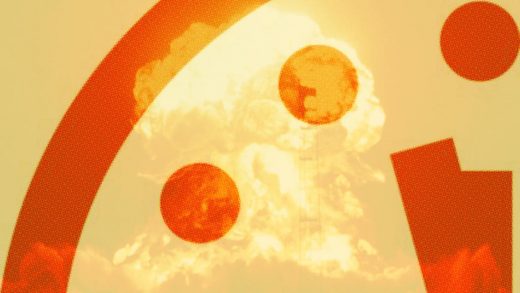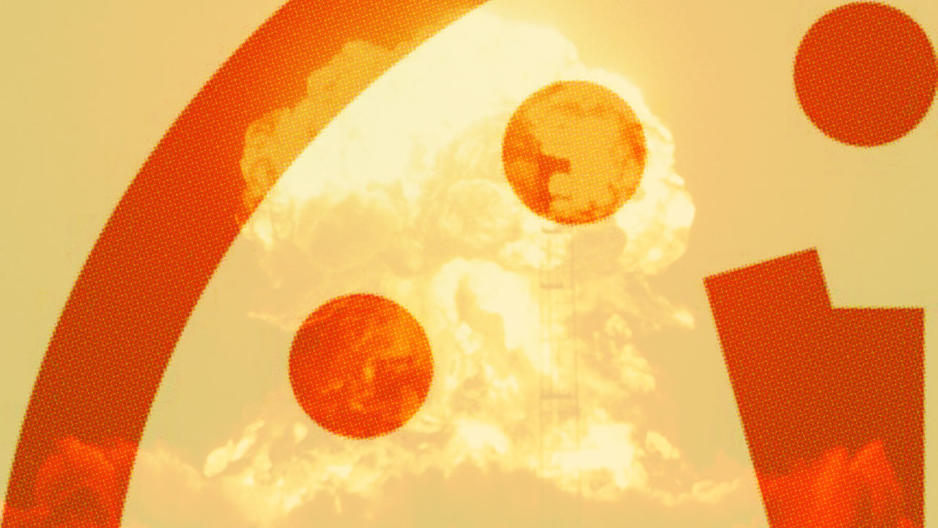Why Scientists Just Reset The Doomsday Clock Closer To Midnight
In a series of statements alluding to President Donald Trump’s fiery rhetoric, experts from the Bulletin of Atomic Scientists moved its Doomsday Clock forward to two-and-a-half minutes to midnight on Thursday. They also cited the threat of nuclear arms and climate change, as well as a rise in nationalism and a disregard among political leaders for scientific facts. The clock is now the closest it’s been to midnight—symbolizing, essentially, human extinction—since the 1950s, during the early Cold War.
“The current political situation in the United States is of particular concern,” said David Titley, a member of the Bulletin‘s Science and Security Board and founding director of Pennsylvania State University’s Center for Solutions to Weather and Climate Risk, in a press conference announcing the change.
Titley called upon the Trump administration to acknowledge the human role in warming the planet and emphasized the need to reduce carbon emissions.
“Climate change should not be a partisan, political issue—the well-established physics of the earth are neither liberal nor conservative in character,” he said. “Alternative facts will not make the challenges of climate change magically go away.”
The reference to “alternative facts” was an allusion to a phrase Trump advisor Kellyanne Conway used to defend disputed claims about the size of the crowd at Trump’s inauguration and has come to symbolize the new administration’s tendency to embrace questionable, or outright false, claims. It wasn’t the only reference at the Doomsday Clock press conference to the new U.S. president, as Rachel Bronson, executive director and publisher of the Bulletin, cited other concerns beyond the particular details of nuclear buildup and greenhouse gas emissions.
“The first has been the cavalier and reckless language used across the globe, especially in the United States, during the presidential election and after, around nuclear weapons and nuclear threats,” she said. “The second has been a growing disregard of scientific expertise.”
The clock, first created in 1947 to highlight the risks of the Cold War-era nuclear arms race, had previously been set to three minutes to midnight in 2015. Back in the 1950s, during a particularly tense moment in the Cold War, when the United States and Soviet Union both developed and tested the hydrogen bomb, the Bulletin set the clock to just two minutes from midnight. The clock was furthest from midnight, set to 17 minutes before the hour, in 1991, as Cold War tensions eased and the U.S. and Russia made progress on arms reduction.
“The Doomsday Clock is closer to midnight than it’s ever been in the lifetime of almost everyone in this room,” said Lawrence Krauss, chair of the journal’s board of sponsors and director of the Origins Project at Arizona State University.
Speakers from the Bulletin also pointed to efforts by the United States and Russia to modernize their nuclear arsenals, as well as nuclear developments in other nations like North Korea, India, and Pakistan and Trump’s suggestion during the presidential election that South Korea and Japan might consider developing their own atomic weapons.
“Saber rattling and loose but dangerous rhetoric have become almost commonplace,” said Rachel Bronson.
The publication, which was founded in 1945 by scientists who participated in the Manhattan Project that developed the initial atomic bomb and said they “could not remain aloof to the consequences of their work,” also pointed to rising threats from cyberattacks and biological warfare.
While computer hacking is not a new development, its role in undermining confidence in democratic institutions and the results of the recent election is, warned Krauss. And while new gene editing technologies like the tool known as CRISPR may help cure disease, they may also make it easier for even relatively unsophisticated attackers to unleash biological attacks, he said.
“Technological innovation is occurring at a speed that challenges society’s ability to keep pace, even as many citizens lose faith in the institutions upon which they must rely to make scientific innovation work for them rather than against them,” said Krauss.
With the press conference streamed through the Bulletin‘s website and on Facebook Live, Krauss called upon individual viewers to urge political leaders to address the problems of the day.
“We chose the Doomsday Clock 70 years ago, because we feel it allows us a rare opportunity to reach the global public directly with an enduring icon and to raise the profile of urgent, global, existential threats that the public needs to be aware of to act responsibly,” Krauss said. “The future of the clock, and our future, is in your hands.”
Fast Company , Read Full Story
(25)



